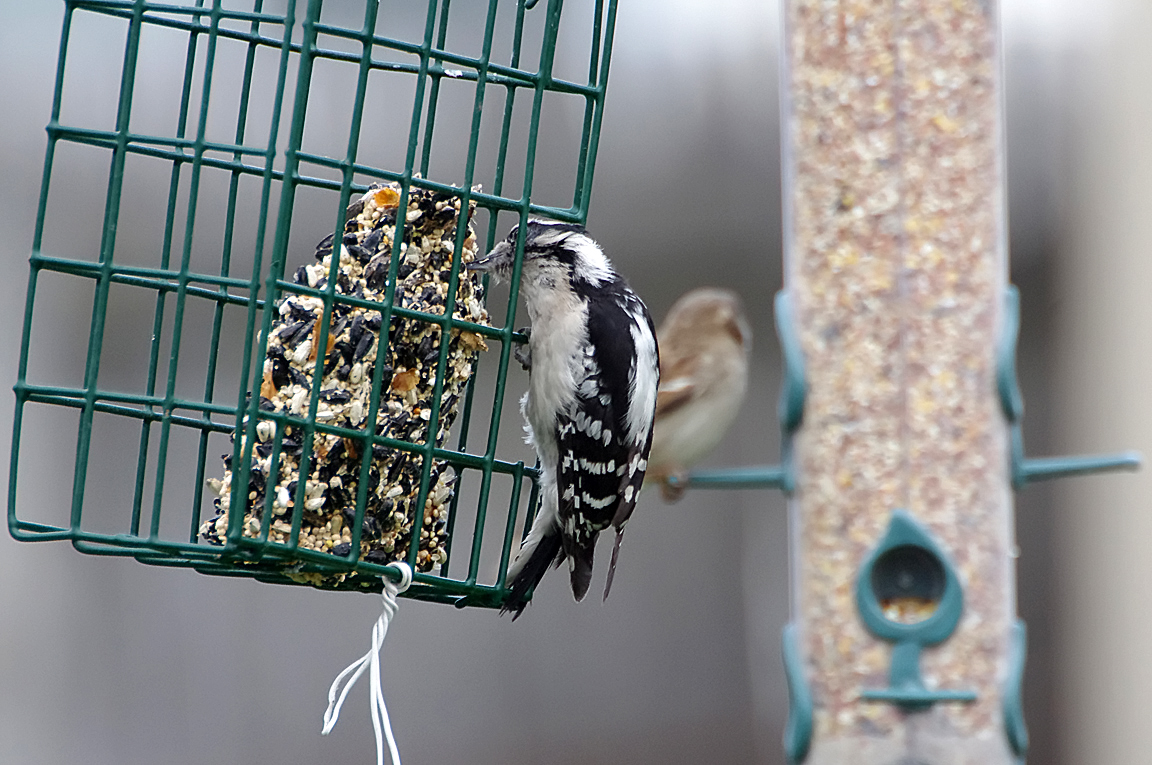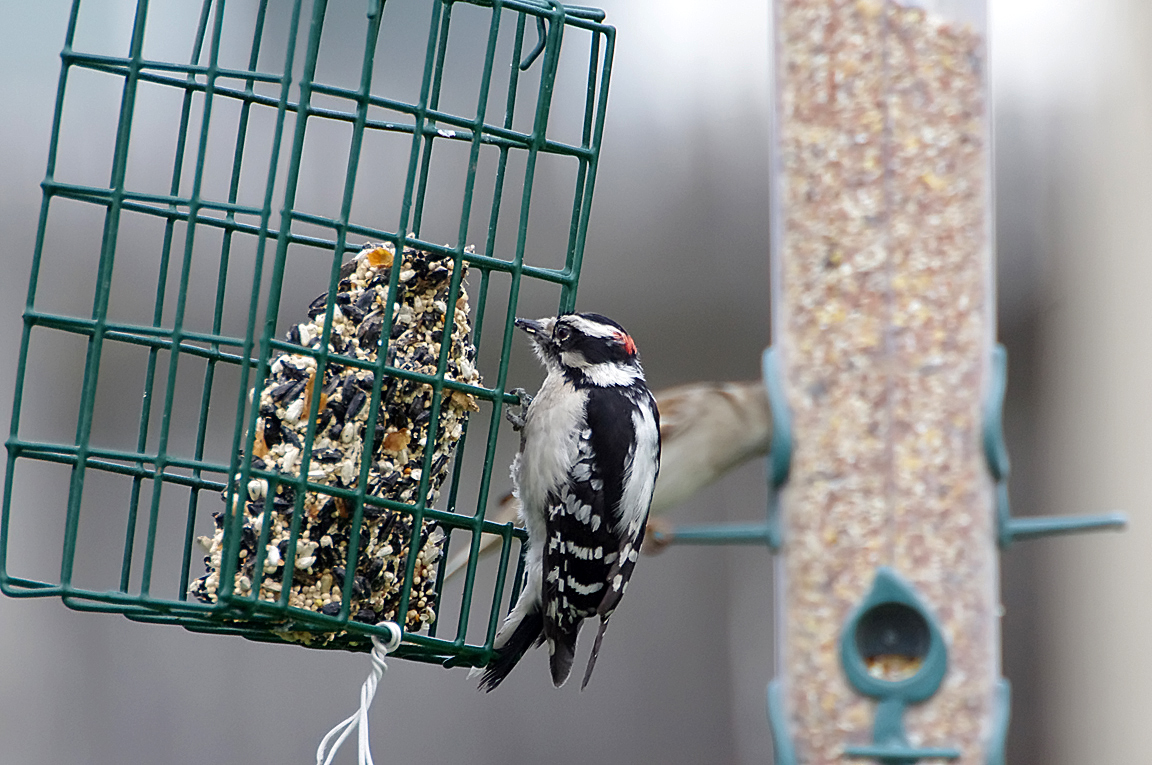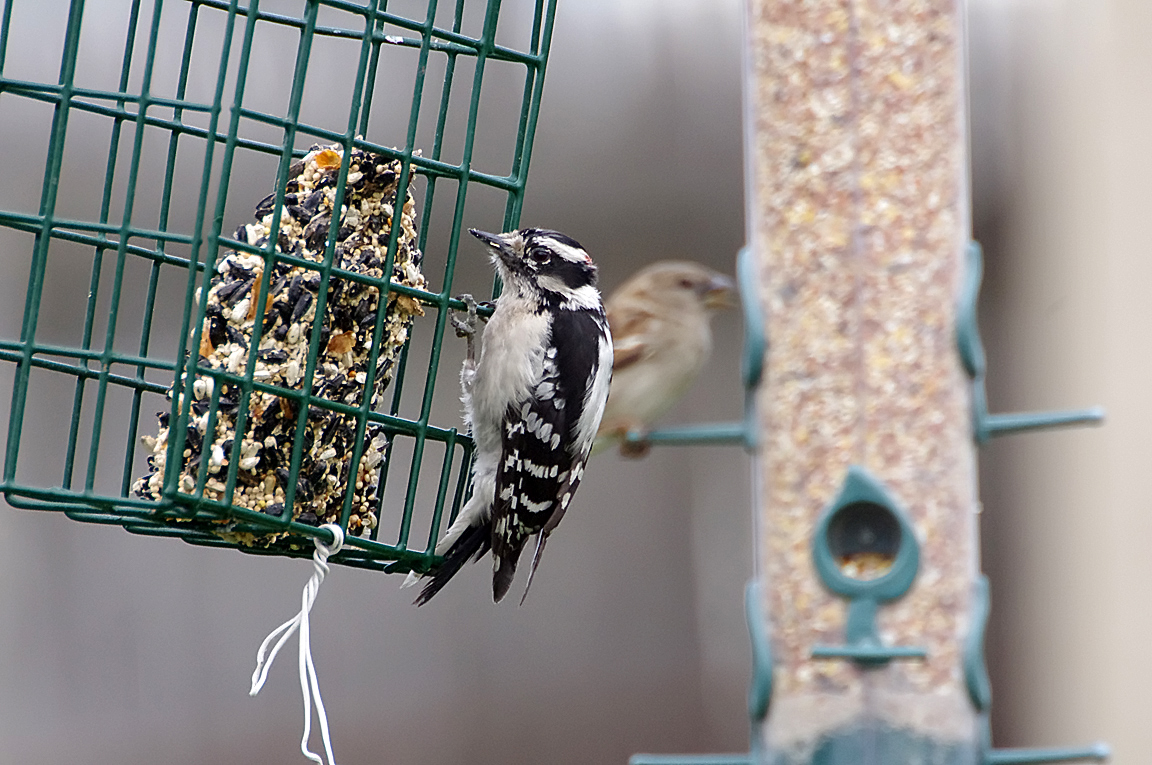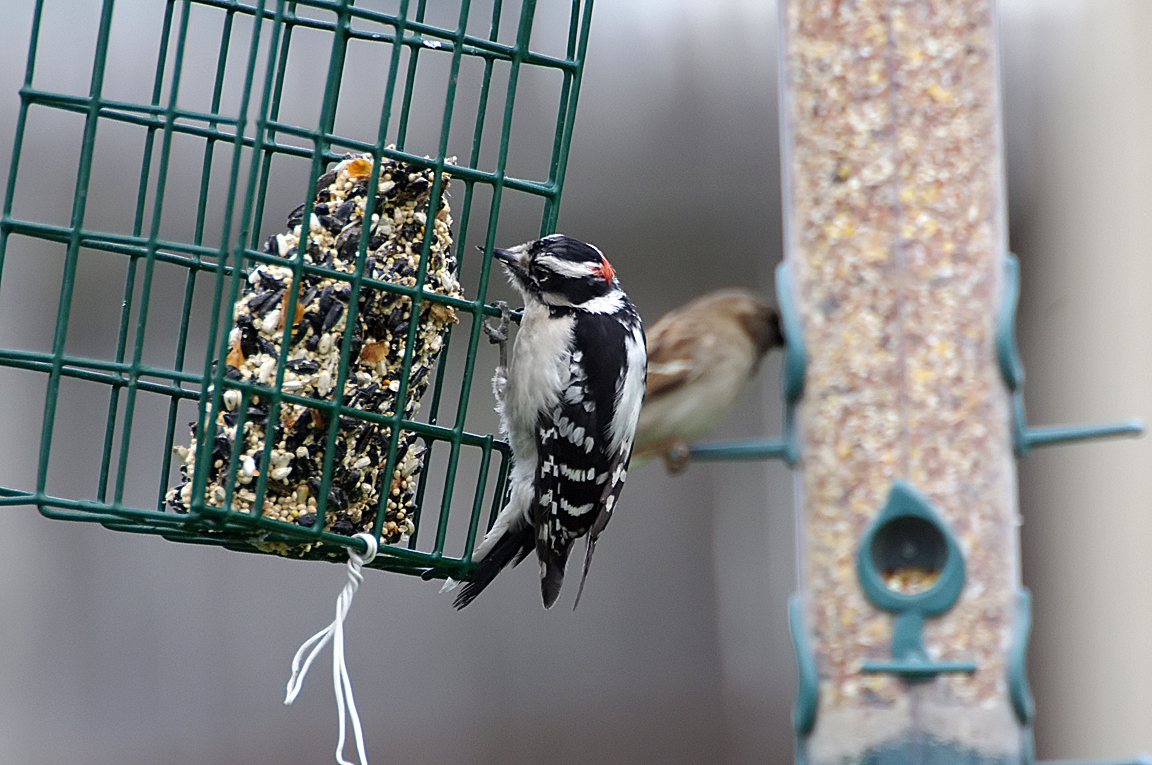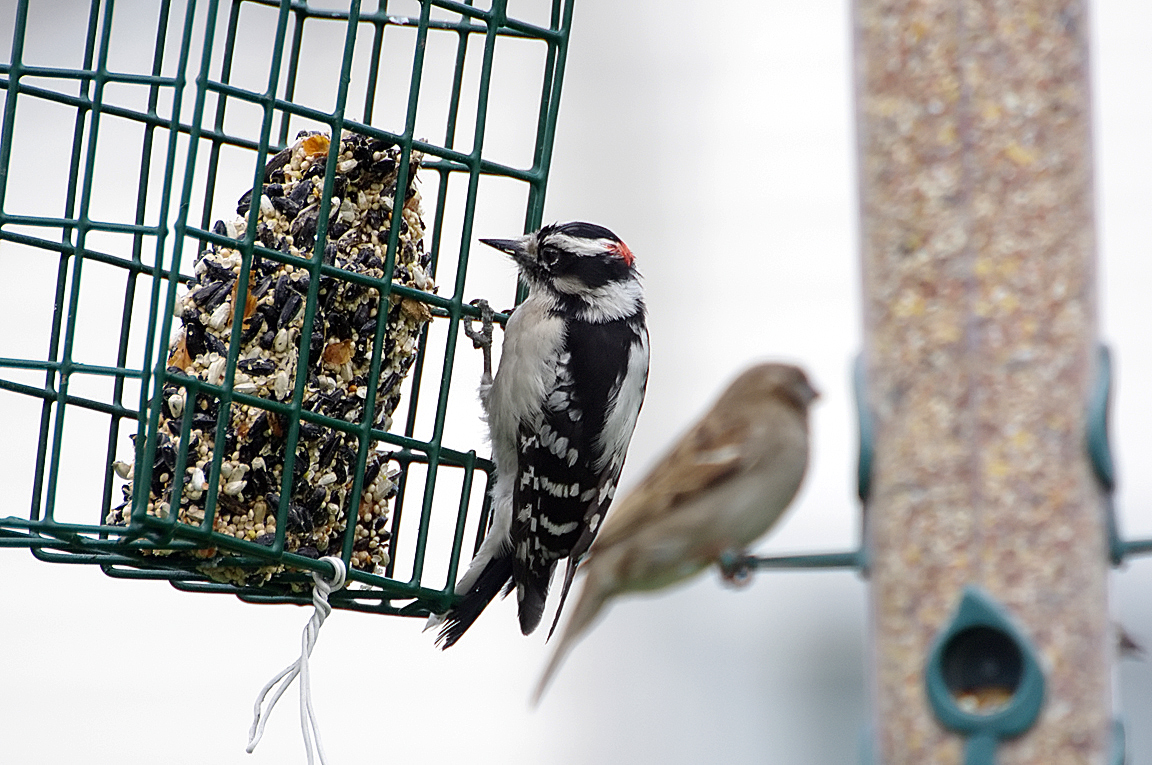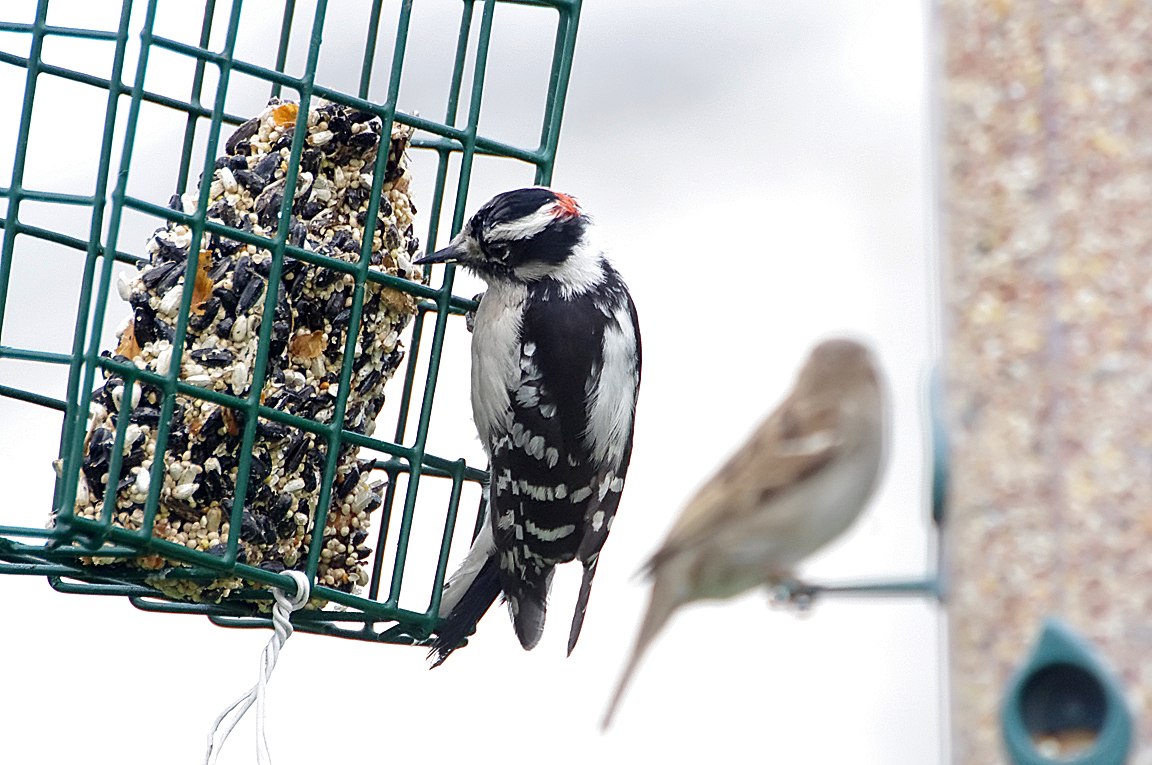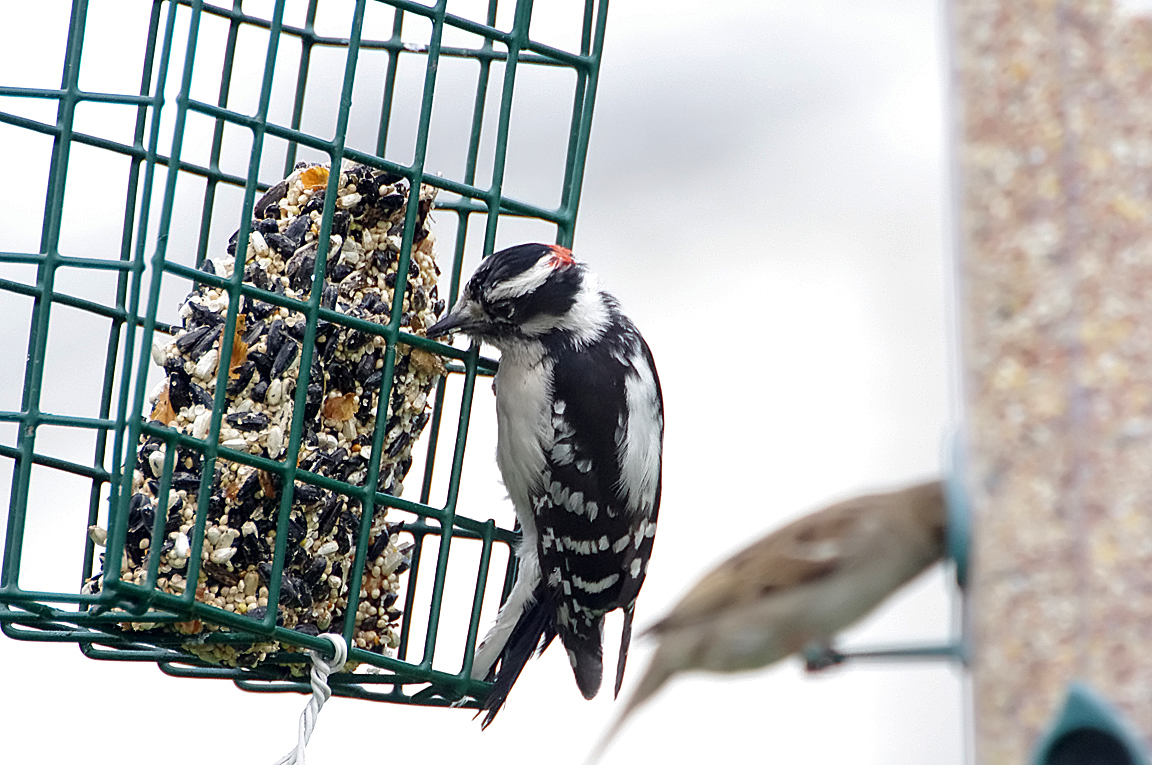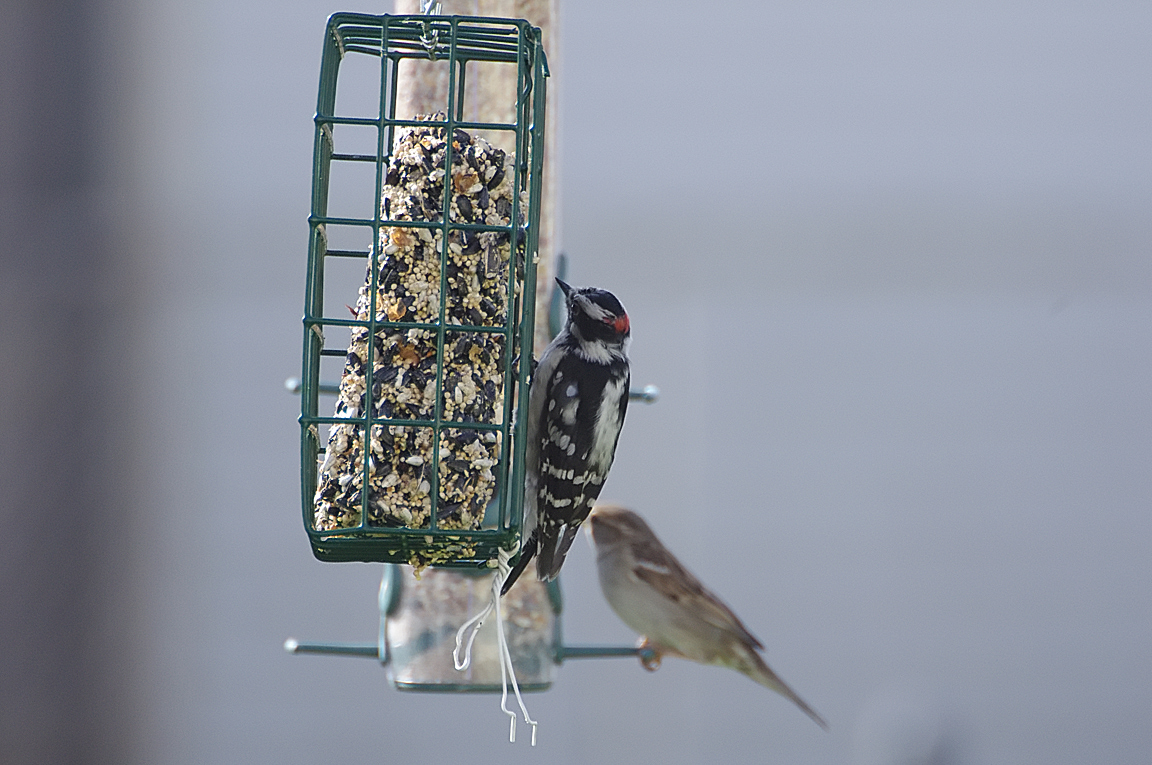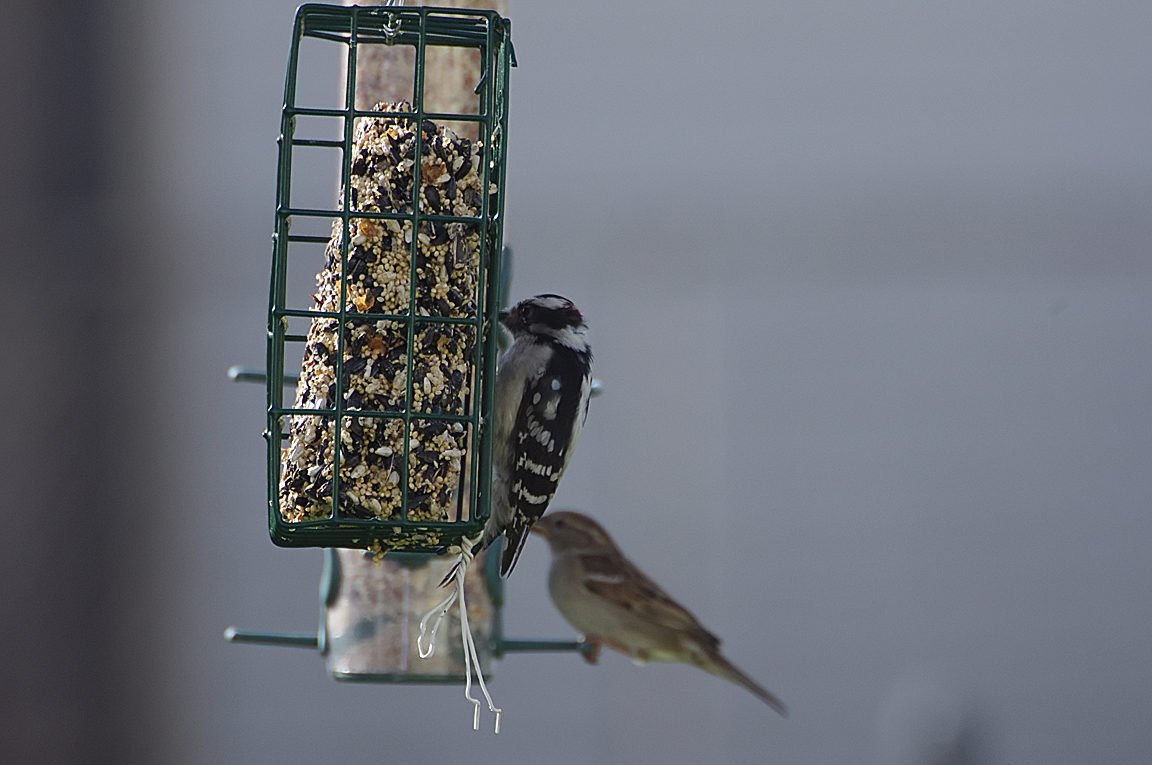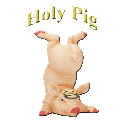|
|
|
 |
Downy Woodpecker
|
| Picoides pubescens | |
The active little Downy Woodpecker is a familiar sight at backyard feeders and in parks and woodlots, where it joins flocks of chickadees and nuthatches, barely outsizing them. An often acrobatic forager, this black-and-white woodpecker is at home on tiny branches or balancing on slender plant galls, sycamore seed balls, and suet feeders. Downies and their larger lookalike, the Hairy Woodpecker, are one of the first identification challenges that beginning bird watchers master.
Interesting Information
-
In winter Downy Woodpeckers are frequent members of mixed species flocks. Advantages of flocking include having to spend less time watching out for predators and better luck finding food from having other birds around.
-
Male and female Downy Woodpeckers divide up where they look for food in winter. Males feed more on small branches and weed stems, and females feed on larger branches and trunks. Males keep females from foraging in the more productive spots. When researchers have removed males from a woodlot, females have responded by feeding along smaller branches.
-
The Downy Woodpecker eats foods that larger woodpeckers cannot reach, such as insects living on or in the stems of weeds. You may see them hammering at goldenrod galls to extract the fly larvae inside.
-
Woodpeckers don't sing songs, but they drum loudly against pieces of wood or metal to achieve the same effect. People sometimes think this drumming is part of the birds' feeding habits, but it isn't. In fact, feeding birds make surprisingly little noise even when they're digging vigorously into wood.
-
Downy Woodpeckers have been discovered nesting inside the walls of buildings.
-
The oldest known Downy Woodpecker lived to be at least 11 years 11 months old.
Description
Adult Description
-
Length Range: 17-18 cm (6.75-7 in)
-
Weight: 28 g (1 oz)
Downy Woodpeckers are small versions of the classic woodpecker body plan. They have a straight, chisel-like bill, blocky head, wide shoulders, and straight-backed posture as they lean away from tree limbs and onto their tail feathers. The bill tends to look smaller for the bird's size than in other woodpeckers.
Downy Woodpeckers give a checkered black-and-white impression. The black upperparts are checked with white on the wings, the head is boldly striped, and the back has a broad white stripe down the center. Males have a small red patch on the back of the head. The outer tail feathers are typically white with a few black spots.
Sex Differences
Sexes Similar except for Red spot on the back of the Male's head
Immature
Resembles female with aditional red crown on it's head

Photo taken from: The Sibley Field Guide by David Allen Sibley

© 2003 Cornell Lab of Ornithology
|
Habitat |
|
Open woodlands, particularly deciduous woods and along streams. Also found in created habitats including orchards, parks, and suburbs. You may also find Downy Woodpeckers in open areas, where they can nest along fencerows and feed amid tall weeds. |
|
Behavior |
|
An active woodpecker that moves quickly over tree trunks, branches, and stems of grasses and wildflowers, characteristically leaning against its stiffened tail feathers for support. Downy Woodpeckers move horizontally and downwards on trees much more readily than most other woodpeckers. You may also see them perched atop tall weeds such as goldenrod in late summer, hammering away at a plant gall to get at the larva inside. Occasionally hops on the ground for food. Downy Woodpeckers have the undulating flight pattern typical of many woodpecker species, alternating quick wingbeats with folding the wings against the body. When having a dispute with another bird, Downy Woodpeckers fan their tails, raise their head feathers, and jerk their beaks from side to side. In spring you may see courtship displays in which males and females fly between trees with slow, fluttering wingbeats that look almost butterfly-like. |
|
Food |
|
Downy Woodpeckers eat mainly insects, including beetle larvae that live inside wood or tree bark as well as ants and caterpillars. They eat pest insects including corn earworm, tent caterpillars, bark beetles, and apple borers. About a quarter of their diet consists of plant material, particularly berries, acorns, and grains. Downy Woodpeckers are common feeder birds, eating suet and black oil sunflower seeds and occasionally drinking from hummingbird feeders. |
Taxonomy
| Kingdom: | Animalia |
| Phylum: | Chordata |
| Subphylum: | Vertebrata |
| Class: | Aves |
| Order: | Passeriformes |
| Family: | Picidae |
| Subfamily: | Picinae |
| Genus: | Picoides |
| Species: | Picoides pubescens |
| Subspecies: | Picoides pubescens fumidus |
| Picoides pubescens gairdnerii | |
| Picoides pubescens gairdnerii | |
| Picoides pubescens leucurus | |
| Picoides pubescens medianus | |
| Picoides pubescens pubescens | |
| Picoides pubescens turati |
Similar Species |
|
Hairy Woodpeckers are larger than Downy Woodpeckers and have a larger bill that is almost as long as the entire head. Hairy Woodpeckers have a longer and more distinct black mark on the shoulder, and in most populations, completely white outer tail feathers. A Downy Woodpecker's "whinny" call descends in pitch toward the end, unlike the Hairy Woodpecker's call. Nuttall's and Ladder-backed woodpeckers have horizontal bars on the back. Red-cockaded Woodpecker is a rare bird of southeastern pine forests. It has a barred back and white cheek. |
|
Bird Sound |
|
The Downy Woodpecker's whinnying call, made by both sexes, is a typical sound of deciduous forests during the breeding season. It's a somewhat excited string of hoarse, high-pitched notes that descend in pitch toward the end; the call lasts about 2 seconds. Excited birds also give a very sharp pik note, occasionally repeated several times. |
|
Eggs look like this |
|
Photo taken from: ARCTOS Collaborative Collection Management Solution |
